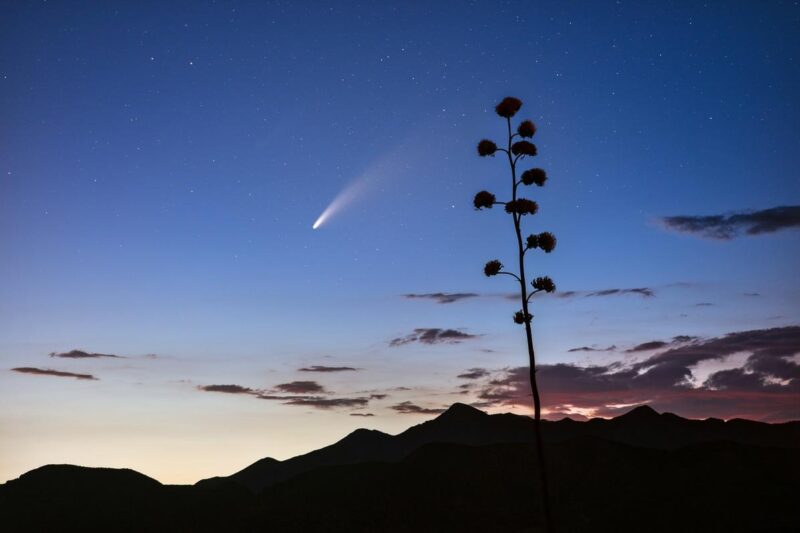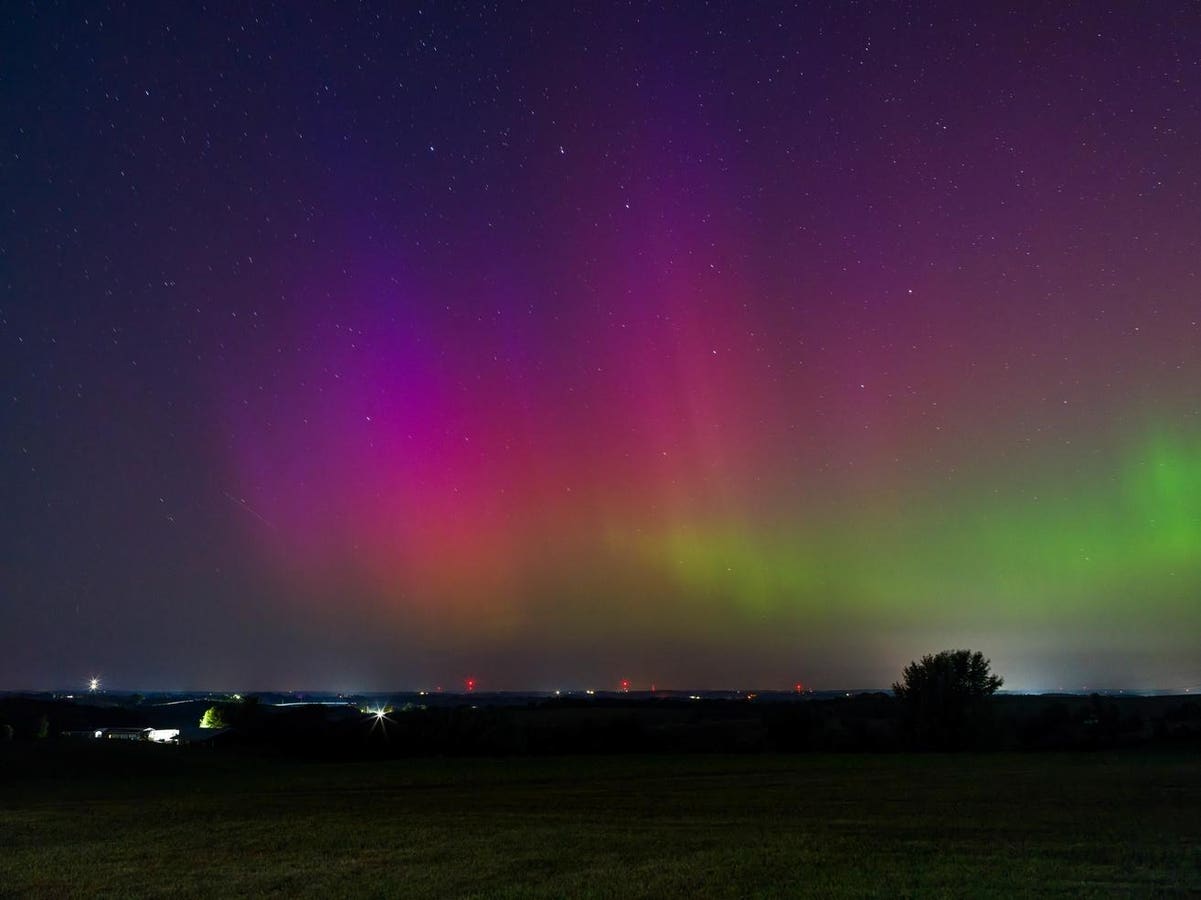Comet Neowise streaks across the night sky in the Tonto National Forest near Phoenix, Arizona.
getty
Check my feed every day this month for a daily “comet tracker” with finder charts and tips for viewing Comet Lemmon and Comet SWAN from mid-northern latitudes. Also read How To Photograph The Green Comets and Best Stargazing Apps For Finding The Comets.
Have you seen the comets yet? Comets Lemmon (C/2025 A6) and SWAN (C/2025 R2) are now becoming visible in the post-sunset night sky and are due to reach maximum brightness around Oct. 20-21 — just as the annual Orionid meteor shower peaks. As if the prospect of two comets and around 20 “shooting stars” weren’t enough to get you racing into rural areas at night, the Northern Lights are also possible.
See Comets, A Meteor Shower And Northern Lights
October typically brings frequent and intense displays of aurora — and particularly this year. In the wake of the equinoxes in March and September, Earth’s magnetic field tilts into a more favorable orientation, allowing solar particles to interact more effectively with the magnetosphere. That’s precisely what’s been happening in 2025, with display after display for northern U.S. states and Canada. On the cards now is geomagnetic activity from Oct. 16 through Oct. 21 — exactly when the comets and the Orionids peak.
Find A Dark Sky
Even if you can’t make Oct. 20-21, any time the week before or after is good for viewing the comets, which may reach naked-eye visibility from a dark sky destination. Find a Dark Sky Place, check a light pollution map for dark northern and western horizons, and pack a pair of binoculars (for the comets) and a blanket (for the meteor shower).
Are there any guarantees? Only one — if you stay in the city, you’ll almost certainly see nothing at all of the comets, the “shooting stars” or any aurora.
Here are 25 places in the U.S. for dark skies — from U.S. national parks and state parks to rural areas popular with stargazers and astronomers. It’s not definitive nor exhaustive (and it probably doesn’t include your favorite place to stargaze), but it will help anyone after a view of the night sky at its best.
25 Dark Sky Destinations In The U.S. To See The Comets
- Acadia National Park, Maine
- Big Bend National Park (Dark Sky Park), Texas
- South Llano River State Park (Dark Sky Park), Texas
- Canyonlands National Park (Dark Sky Park), Utah
- Goblin Valley State Park (Dark Sky Park), Utah
- Cherry Springs State Park (Dark Sky Park), Pennsylvania
- Chaco Culture National Historical Park (Dark Sky Park), New Mexico
- Craters of the Moon National Monument (Dark Sky Park), Idaho
- Death Valley National Park (Dark Sky Park), California
- Waterton-Glacier International Peace Park (Dark Sky Park), Montana
- Grand Teton National Park and Teton Country (Dark Sky Community), Wyoming
- Great Basin National Park (Dark Sky Park), Nevada
- Great Sand Dunes National Park & Preserve (Dark Sky Park), Colorado
- Hawai‘i Volcanoes National Park, Hawai‘i
- Headlands Park (Dark Sky Park), Michigan
- Hoosier National Forest, Indiana
- Kissimmee Prairie Preserve State Park (Dark Sky Park), Florida
- Mark Twain National Forest, Missouri
- Newport State Park (Dark Sky Park), Wisconsin
- North Cascades National Park, Washington
- Petrified Forest National Park (Dark Sky Park), Arizona
- Prineville Reservoir State Park (Dark Sky Park), Oregon
- Shawnee National Forest, Illinois
- Stephen C. Foster State Park (Dark Sky Park), Georgia
- Voyageurs National Park (Dark Sky Park), Minnesota
How To Photograph Comets With A Smartphone
To photograph a comet, you’ll need to use either a smartphone or a manual mirrorless or DSLR camera. If mounted on a tripod or similar, a smartphone’s “night mode” or “pro mode” will take a long exposure and likely find the comet. If your smartphone has a RAW mode, use it.
Using a DSLR camera on a tripod with a 50-105mm lens, begin with the following settings: ISO 800-1600, f/2.8–f/4 aperture, and a shutter speed of 2-5 seconds (set the focus to infinity or manually focus on a bright star or the moon using live-view magnification). In suburban skies, try slightly higher ISO and shorter exposures. You should pick up the comet’s tails, even if you don’t see them, using binoculars (which you should have with you to help you locate the comets).
Wishing you clear skies and wide eyes.









